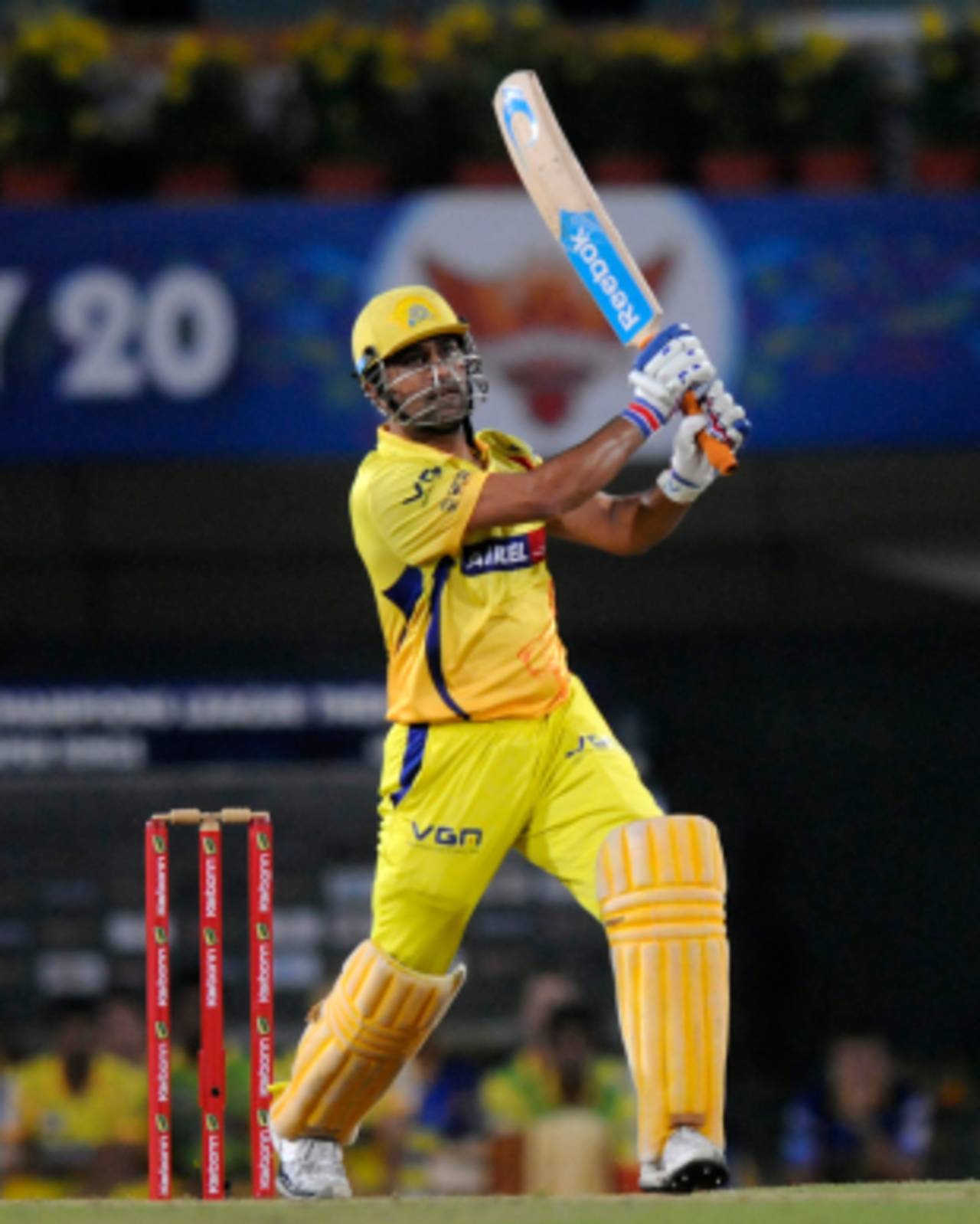The Champions League T20 final on Sunday was the stuff of organisers and television executive's dreams. Two Indian teams in the final, a draw card scenario of Davids and Goliaths, with the last hurrah "in coloured clothing" for two of the biggest names in Indian cricket. Exactly what was needed to pack the stadium and give television a chance to draw maximum eyeballs.
Even though this is insta-thrill T20 cricket, rarely do sporting scripts produce such a perfect orchestration of excitement, skill, thrill and nostalgia, certainly not in the Champions League, an event that has the most prize money at stake in all cricket events outside the World Cup. The 2013 final was the best, most high-profile finish in the tournament's five editions, but for it to continue to be sustainable and to shore up flagging TV ratings, the CLT20 could do with a fresh set of bells and whistles next season.
Given that the biggest of Indian stars is what gave the CLT20 legs this year, the event could consider borrowing from North American sports, the concept of an 'all-star break.'
The all-star break serves as a popular, much-watched interregnum in the hectic calendar of most major American sports leagues like the MLB, NFL, and NBA, which provides a stage for the best in the business to exhibit their superior skillsets. The first all-star game in baseball took place in 1933 because baseball wanted to have a "marquee" event to stay in step with the World Expo taking place in Chicago at the time.
Pro basketball's all-star game was born following a scandal in 1949, involving collegiate players manipulating results in order to ally them with favourable gambling odds which saw the sport's reputation dented and league attendances taking a severe hit. The NBA's first-ever all-star game in 1951 proved to be a resounding success and is now a league staple.
Translated into cricket, this could become a CLT20 feature, showcasing skills tests or a match between two 'dream' teams. The skills break could include demonstrations of six-hitting, fast bowling and fielding. T20s "cricketainment" component has always been debated over, but the all-star break will detach itself from the 'serious' side of the competition and in a real sense, be about sheer revelry.
In order to get the public involved and generate television interest, the all-star candidates can be drawn up by a committee with the final call being given to the fans. The actual all-star contenders for both events could then be selected through channels such as email, texting or online voting.
This could be a vital component for the CLT20 to increase public interest because, unlike the IPL, where "an Indian team always wins", CLT20 TRPs have been a struggle due to the fact that the T20 teams from outside the subcontinent are a largely unknown commodity for the Indian television audience.
In fact, when the tournament first premiered, its TRPs were
massively under expectations, registering 1.06 (one TRP represents 1% of viewers in the surveyed area in a given minute), compared to an average TRP of 4.1 for the 2009 IPL. The next two seasons showed a significant improvement, with ratings rising to 1.44 and 1.64, but still lagged way behind the IPL's figures of 4.7 and 3.5.
This is one main reason why sponsorship for the CLT20 has largely been a revolving door of sorts, with title sponsors exiting and entering as quickly as they arrived/left. Revenues from TV rights are locked in for another five years but the advertisers are not.
If it is something that is interactive and can be televised, then [a board like the] BCCI would give permission. But further than that, the franchises also need to buy into the concept, along with the BCCI
Kolkata Knight Riders' Joy Bhattacharjya
The television figures of all-star breaks in North America are an indicator of the popularity of the concept. In fact, in baseball, some all-star games were able to attract as much as
20 million unique households through the 1980s, and in basketball, the 2012 all-star break received a 4.4 US HH rating in
metered markets, which tied for second best in the history of the event. Consider the fact that in many ways these are the most watched events in their respective seasons, aside from the play-offs.
The CLT20 all-star break is akin to revisiting a 'festival' match or the single or double-wicket tournaments that were often held in India during the 70s and 80s as part of a cricketer's 'benefit' event. Despite the scheduling and logistical challenges of organising an all-star break - complete with grumbling franchises and injury worries - it could become the fresh injection of novelty and interest needed by the tournament. The break, if pushed and promoted, could provide a huge cash cow for the organisers due to the many sponsorship opportunities available.
The feasibility of implementing such an idea, according to Joy Bhattacharjya, Kolkata Knight Riders' advisor of content development and management, depends on bringing the broadcasters and sponsors on board. "We need the right sponsors and people behind it in order to create a viable property," Bhattacharjya said. "If it is something that is interactive and can be televised, then [a board like the] BCCI would give permission. But further than that, the franchises also need to buy into the concept, along with the BCCI."
The CLT20 can be the first platform for the "all-star" idea. If successful, it can be transferred into the IPL. An all-star game provides the shock to the system for these leagues, especially in the face of dwindling interest and TV ratings. It is an idea whose time may already have come.
Rohan Sharma is a sub-editor at ESPNcricinfo
